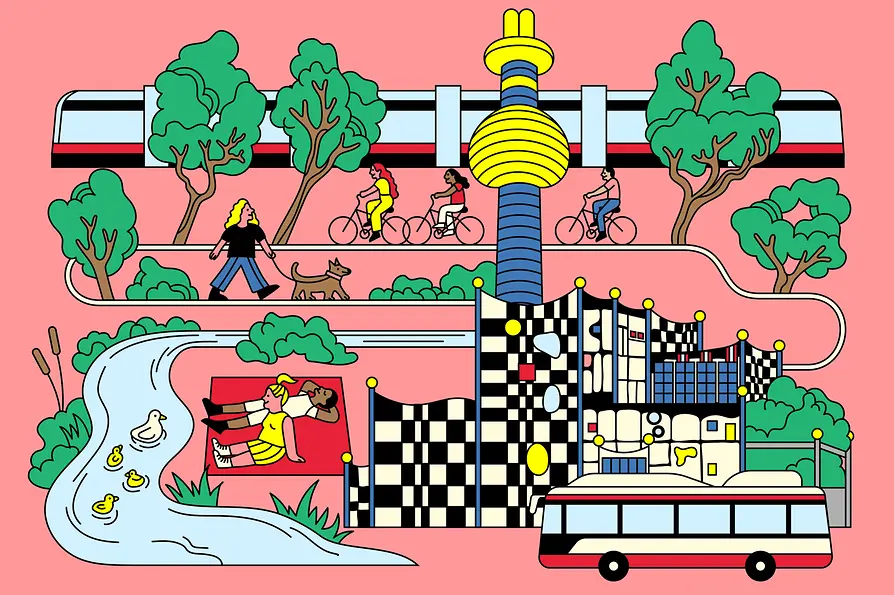Careful, Growth!
Why tourism is growing – and needs to become more sustainable
The world – together with tourism – has reached a turning point. So, there’s nothing for it but to adapt to the new situation ahead.
Tourism: once upon a time it applied to an activity undertaken by people during their statutory paid time off as they took a break from their exhausting workaday lives. But that was then. These days, tourism is something that plays out all year round: in between times, when there’s a gap for a trip, over the weekend. A few days here, a week there. Mobility is on the rise and the pace of change is putting a growing burden on services and social structures. And it’s not some kind of passing fad, either. Growth will be so strong that it has the potential to push cities and regions to their limits.
Tourism becomes a lifestyle
People’s lives are no longer as linear as they once were – kindergarten, school, training, a job with two to three weeks' vacation a year, then a quiet retirement. They are more likely to work abroad than before, take short trips, see holidays as part of a lifestyle choice and visit cities for intellectual enrichment. There are lifestyle shifts that involve increased mobility and use the same resources and infrastructure as traditional tourism: logistics, insurance, support, food, temporary accommodation. “This will cause lots of problems,” comments Vienna Tourist Board Director Norbert Kettner. “As an industry it is not that we can play a role in the drive for more sustainability. We have to. Because what we would currently describe as tourism is now becoming a lifestyle.”
37 billion trips each year
The United Nations World Tourism Organization and Oxford Economics forecast that international tourism arrivals will quadruple from around 0.5 billion in 1995 to over two billion in 2030. Europe will account for the largest share, with its cities the main growth drivers. More than half of the world's population lives in cities. But that’s only part of the story.
Dirk Glaesser, Director of Sustainable Development of Tourism at the UN World Tourism Organization, explains that they wanted to know what it looks like when domestic and day tourism worldwide is taken into account – especially in rapidly growing countries like India and China. Once it’s all added up, approximately 37 billion trips each year will be attributable to tourism by 2030. “That's something like four to five trips per person on Earth,” Glaesser confirms. Which is why good, sustainable growth is the order of the day. “Companies also need to be brought to the realization that resilience is a necessity which has to be hardwired into the tourism products they create, otherwise they run the risk of developing a dependency on visitors and the value they add. Sustainability and resilience are closely linked, and the next crises are sure to come. Their frequency and intensity will increase.”
Tourism will contribute
What Vienna wants when it comes to growth is clear: to continue to play a pioneering role in positive development. In tourism, it will be a question of avoiding overburdening, achieving optimum tourism – that benefits visitors and residents alike – and focusing on the location’s established qualities. The city has clear goals when it comes to meeting the challenges of the future. Transitioning away from gas, away from asphalt: there is no shortage of initiatives. A climate roadmap is in place, and under the capital’s Klima City strategy, Vienna aims to be climate-neutral by 2040, cut its material footprint by 40% and reduce final energy consumption by 45%. A highly ambitious goal, indeed. The city is growing. Production and consumption are high.
Tourism has its part to play in reaching the goals. Here, the topics are year-round jobs, food and hospitality, as well as energy and resource consumption in hotels and other accommodations. In the tourism industry, too, there has also been a slight increase in consumption-based environmental pollution – even if it did come against the backdrop of a sharp rise in visitor numbers. A study by the University of Natural Resources and Life Sciences, Vienna) (BOKU), the University of Economics and Business (WU) and the University of Technology (TU) put the total CO2 equivalent for 2020 at 1.2 million tons: equivalent to 7% of Vienna's total carbon footprint.
Decouple growth from consumption of resources
In future, decoupling growth and consumption of resources will be crucial, explains Nina Eisenmenger, professor at the BOKU’s Institute of Social Ecology. “It will take a concerted effort to cut resource consumption in absolute terms, even though a lot has already happened over the past few years.” In her view, the biggest drivers of change are innovative construction, more efficient use of living space, circularity in public procurement – and the implementation of new mobility concepts. “There is still a lot that needs to happen before we can achieve a truly sustainable mobility system.” The topic of growth also needs to be discussed: “What should actually be growing? The city, the entire economy, every industry? What growth is indispensable for lifestyle satisfaction? Instead of having growth as the overarching goal, instead I would say prosperity, health and a city that is worth living in.”


